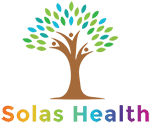
Opioid Use Disorder and Young Adults
Opioid use disorder among young adults has been a concerning issue, with more young adults overdosing than ever in the past five years. According to the National Survey on Drug Use and Health (NSDUH) conducted by the Substance Abuse and Mental Health Services Administration (SAMHSA) in 2019, nearly 1.7 million young adults between the ages of 18 and 25 reported past-year misuse of prescription pain relievers.
During the pandemic, this problem became more widespread as young people looked for more ways to alleviate anxiety, boredom, or loneliness.
How Common Is Opioid Use Among Young Adults?
Substance use among young adults in America is a common issue involving various substances and factors. The National Survey on Drug Use and Health also revealed that about 37.6% of young adults aged 18 to 25 reported past-month illicit drug use. However, not all of these people will qualify as having opioid use disorder.
Young people use opioids for the same reasons as their older counterparts: to relax, to get high, to help with stress, or to alleviate boredom or anxiety.
As for opioid misuse and initiation, young people first take opioids through various means, including:
- Prescription Medications: Some young adults may initially take opioids through legitimate medical prescriptions for pain management. However, misuse may occur when these medications are not taken as prescribed.
- Peer Influence: Peer pressure and influence play a significant role. Young adults may be introduced to opioids by friends or acquaintances who have already engaged in substance use.
- Family History: A family history of substance use or addiction can contribute to an increased risk of opioid misuse among young adults.
- Mental Health Conditions: Individuals with mental health conditions may be at a higher risk, as they might turn to opioids as a way to self-medicate.
Ways in which young people may misuse opioids include:
- Taking Higher Doses: Some individuals may take higher doses than prescribed or use opioids more frequently than recommended.
- Combining with Other Substances: Using opioids with other substances, called polysubstance use, can increase the risk of adverse effects and overdose. These effects are especially dangerous when taking drugs that suppress the central nervous system, such as alcohol or benzodiazepines.
- Crushing and Snorting or Injecting: Crushing opioid pills to snort or inject them is a form of misuse that can intensify the effects but also increases the risk of harm.
Addressing substance use among young adults requires a comprehensive approach involving prevention, education, treatment, and support services.
Young adults need to be aware that it can happen to anyone; resources are available to help them should they find they have symptoms of opioid use disorder.
What Is Addiction Like? Can Young Adults Have Opioid Use Disorder?
Opioid use disorder (OUD) is a chronic medical condition. One of its main components is characterized by the compulsive use of opioids despite repeated negative consequences. It can profoundly impact a person's physical and mental health, relationships, and overall well-being.
Some typical features of opioid addiction include:
- Craving: Intense desire or urge to use opioids.
- Loss of Control: Difficulty in controlling or stopping opioid use.
- Physical Dependence: A person’s body eventually will develop tolerance to opioids. A tolerance then leads to the need for higher doses to achieve the same effects. Withdrawal symptoms may occur when not using opioids.
- Social Impairment: OUD can lead to social isolation, strained relationships, and difficulties at work or school.
- Risk of Overdose: Individuals with OUD are at an increased risk of opioid overdose, which can be life-threatening.
Yes, young people can have opioid use disorder. Substance use disorders, including opioid addiction, can affect people of various ages, including young adults and adolescents. Early intervention and treatment are crucial to address the issue and prevent long-term consequences.
The Dangers of Street/Online Opioid Procurement
Buying street drugs poses significant dangers, mainly due to the presence of unknown additives or contaminants, such as fentanyl or xylazine. In the past several years, there has been an uptick overdoses due to the addition of dangerous contaminants in counterfeit pills and powders. These dangers include:
- Increased Risk of Overdose: Street drugs may contain potent opioids like fentanyl, which is much stronger than other opioids. Accidental ingestion of even small amounts of fentanyl can lead to a fatal overdose.
- Unknown Substances: The composition of street drugs is often uncertain, making it challenging for users to know what they are ingesting. Adulterants and contaminants can have unpredictable and harmful effects on health.
- Variability in Potency: Street drugs vary in potency and purity, leading to a higher risk of adverse reactions or overdose.
- Legal Consequences: Purchasing and using street drugs involve legal risks, as these substances are often illegal.
- Health Risks: Using drugs obtained from illicit sources can contribute to a range of health issues, including infections, organ damage, and mental health problems.
It is strongly advised to avoid buying or using street drugs and to seek help from healthcare professionals if struggling with substance use. Accessing treatment and support services is crucial for individuals facing opioid addiction.
Can Medication-Assisted Treatment Help?
Medication-assisted treatment (MAT) is considered a legitimate and practical choice for people with opioid use disorder (OUD). MAT involves both medications and counseling or behavioral therapies. This powerful combination can help provide a comprehensive approach to the treatment of opioid addiction.
There are three FDA-approved medications commonly used in MAT for opioid addiction:
- Methadone: It is a long-acting opioid agonist that helps reduce cravings and withdrawal symptoms.
- Buprenorphine: This is a partial opioid agonist that is usually used to manage cravings and withdrawal symptoms. Doctors like it because it has a lower risk of misuse compared to full opioids.
- Naltrexone: It is an opioid antagonist that blocks the effects of opioids. It is typically used after the detoxification phase.
MAT is suitable for people at various stages of addiction, including those who haven't reached rock bottom. It can be beneficial in preventing the escalation of opioid use disorder and promoting recovery before severe consequences occur.
People seeking treatment will consult with healthcare providers and create the most appropriate treatment plan to meet their needs.
If you or somebody you love is using opioids in North Carolina and wants to stop, we're here to help by providing outpatient rehabilitation for fentanyl addiction. Learn more by getting in touch.
If you are in need of help, please call us at: 910-295-7246 or message us.
Categories
addiction opioids
